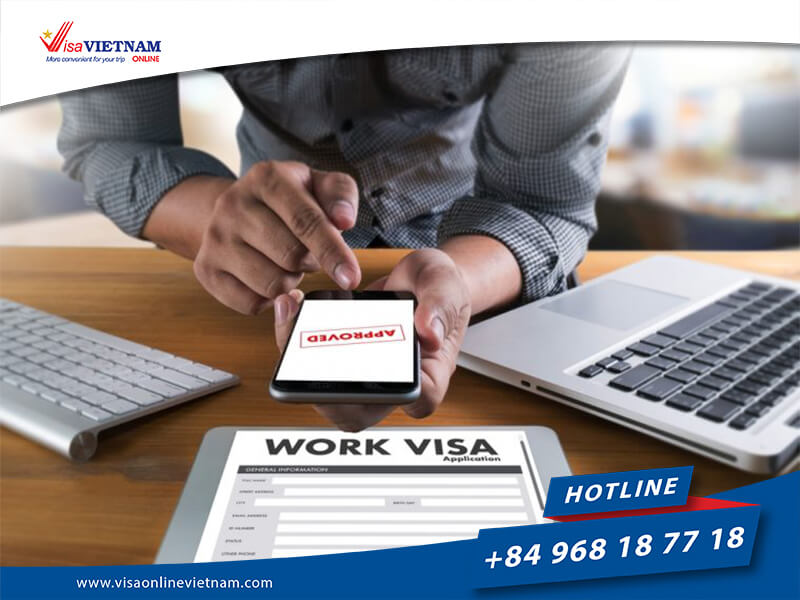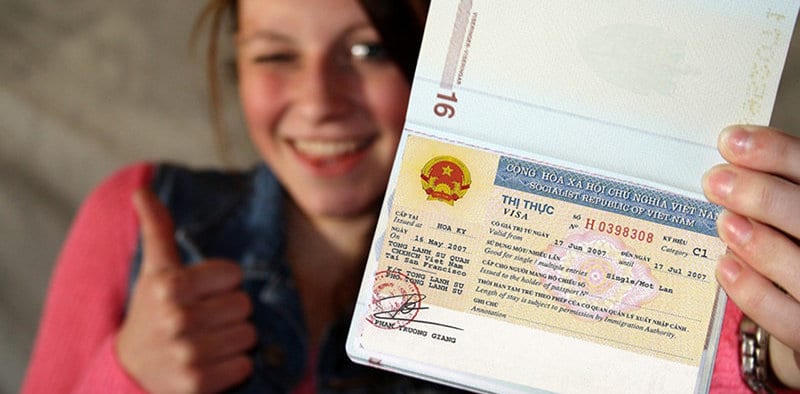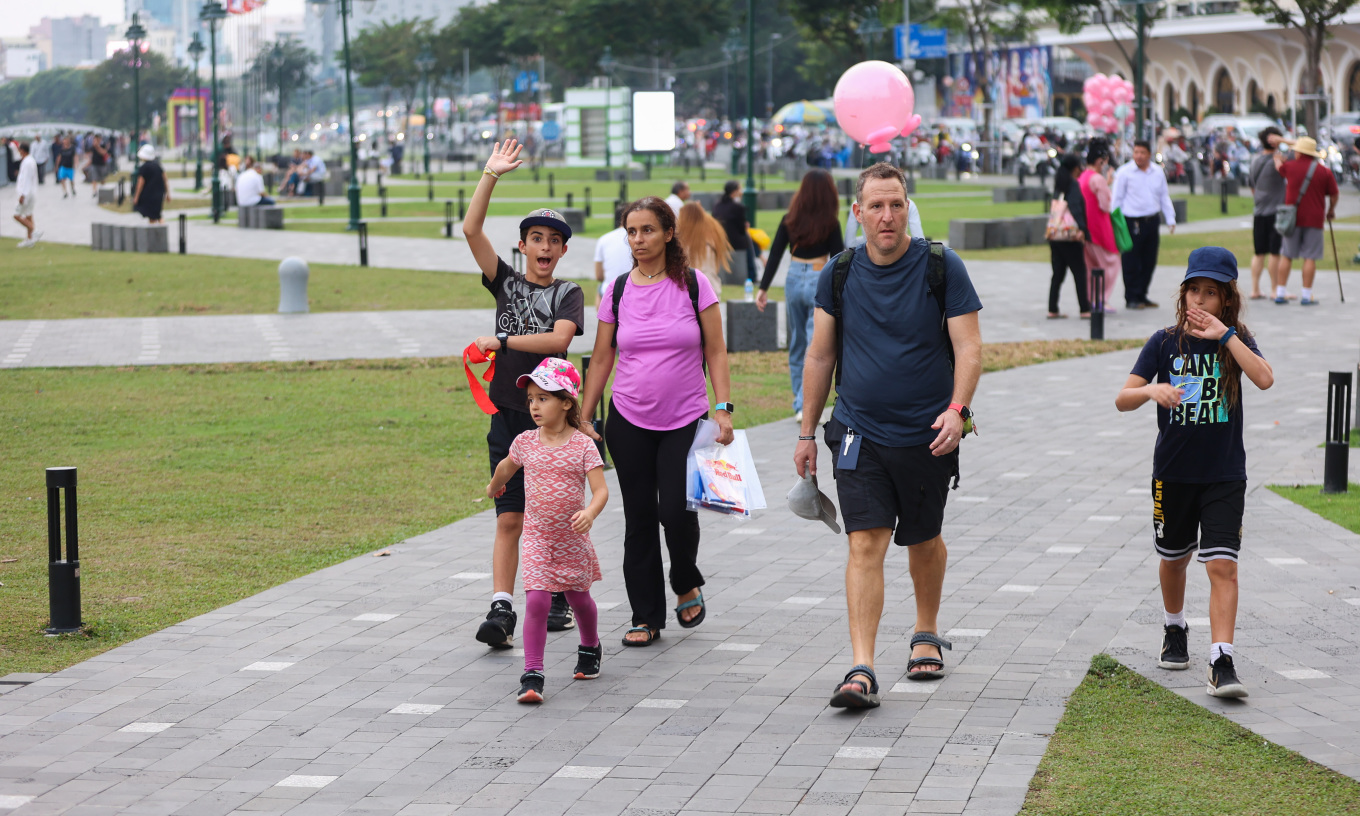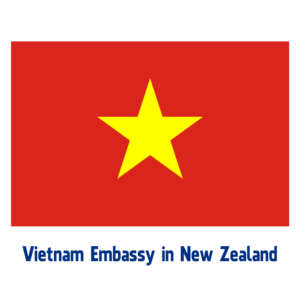
Vietnam Visa Guide A Comprehensive and Hassle-Free Travel Experience 2024
Vietnam is a beautiful and culturally rich country that attracts millions of tourists every year. If you are planning to visit Vietnam, one of the first things you need to take care of is obtaining a visa. A visa is an official document that allows you to enter and stay in a foreign country for a specific period of time. In this guide, we will discuss the requirements and procedures for obtaining a Vietnam visa.
Vietnam Visa Guidelines: Understanding the Requirements and Procedures
Before delving into the visa application process, it’s crucial to understand the fundamentals of Vietnam visa regulations. Here’s a breakdown of the essential guidelines:

Vietnam Visa Types
Vietnam offers a variety of visa types to suit different purposes of entry. The most common types of visas are tourist visas, business visas, and student visas. There are also visas for work, investment, and diplomatic purposes.
Tourist Visas
Tourist visas are the most popular type of visa for Vietnam. They are valid for up to 30 or 90 days and can be single-entry or multiple-entry. Tourist visas can be obtained online or at Vietnamese embassies and consulates around the world.
Business Visas
Business visas are for foreigners who are entering Vietnam for business purposes. There are two types of business visas: DN1 and DN2. DN1 visas are for short-term stays of up to 3 months, while DN2 visas are for long-term stays of up to 12 months. Business visas can be obtained online or at Vietnamese embassies and consulates around the world.
Student Visas
Student visas are for foreigners who are entering Vietnam to study at a Vietnamese university or college. Student visas are valid for up to 1 year and can be extended for up to 4 years. Student visas can be obtained online or at Vietnamese embassies and consulates around the world.
Work Visas
Work visas are for foreigners who are entering Vietnam to work for a Vietnamese company. Work visas are valid for up to 2 years and can be extended for up to 5 years. Work visas can be obtained online or at Vietnamese embassies and consulates around the world.
Investor Visas
Investor visas are for foreigners who are investing in Vietnam. There are four types of investor visas: DT1, DT2, DT3, and DT4. DT1 and DT2 visas are for investors who are investing in large-scale projects, while DT3 and DT4 visas are for investors who are investing in small-scale projects. Investor visas are valid for up to 5 years. Investor visas can be obtained online or at Vietnamese embassies and consulates around the world.
Diplomatic Visas
Diplomatic visas are for foreign diplomats and their families. Diplomatic visas are valid for up to 1 year and can be extended. Diplomatic visas can be obtained online or at Vietnamese embassies and consulates around the world.

Visa Validity
The validity of a Vietnam visa refers to the duration for which you are permitted to stay in the country. Visa validity periods range from single entry visas for short-term stays to multiple-entry visas for extended visits. The table below outlines the different types of visas and their respective validity periods:
| Visa Type | Validity Period |
|---|---|
| Tourist Visa | Up to 30 days |
| Business Visa | Up to 1 year |
| Student Visa | Varies depending on the length of study |
| Family Visit Visa | Up to 6 months |
It’s important to note that the validity period of your visa begins from the date of entry into Vietnam, not the date of issue. Therefore, it’s crucial to plan your trip accordingly and ensure that your visa is valid for the entire duration of your stay.
Visa Extensions
Extensions for existing visas are possible under certain circumstances. If you wish to extend your stay in Vietnam, you must contact the Vietnam Immigration Department for detailed information on visa extensions. It’s essential to apply for an extension at least seven days before your current visa expires to avoid any complications or overstay fees.
Visa Application Fees
Visa application fees vary depending on the visa type, validity period, and processing method. The table below outlines the standard fees for different types of visas:
| Visa Type | Processing Method | Fee (USD) |
|---|---|---|
| Tourist Visa | Online | $25 |
| Business Visa | Online | $135 |
| Student Visa | Embassy/Consulate | Varies depending on the length of the study |
| Family Visit Visa | Embassy/Consulate | $25 |
Fees can be paid online or at designated Vietnamese embassies and consulates. It’s important to note that fees may vary depending on your country of origin, so it’s best to check with the nearest Vietnamese embassy or consulate for accurate information.
Vietnam Visa Photo Guidelines: Ensuring Your Photos Meet the Standards
One of the most common reasons for visa application rejection is incorrect or inadequate photos. To avoid any delays or rejections, it’s crucial to adhere to the following photo guidelines when applying for a Vietnam visa:
- Photos must be taken within the last six months
- Photos must be in color and printed on high-quality photo paper
- Photos must have a white background
- Photos must be 2×2 inches in size
- Photos must show a full front view of the face with a neutral facial expression (no smiling)
- Headwear is only allowed for religious purposes, and the face must be visible
- Glasses are allowed as long as they do not obstruct the eyes
It’s also essential to ensure that your photos meet the specific requirements for each type of visa. For example, business visa photos may require a more professional appearance, while student visa photos may require proof of enrollment or a letter from the educational institution.
Vietnam E-Visa Guide: Streamlining Your Visa Application Process

In recent years, Vietnam has introduced an e-visa system, making it easier and more convenient for travelers to obtain their visas online. The e-visa is available for citizens of 80 countries, including the United States, Canada, Australia, and most European countries.
To apply for an e-visa, you must visit the official Vietnam Immigration website and follow the step-by-step instructions. You will need to upload a digital copy of your passport, a recent photo, and pay the application fee online. The processing time for an e-visa is typically three working days, and once approved, you will receive an electronic visa via email.
It’s important to note that e-visas are only valid for single entry and for stays of up to 30 days. If you plan on staying longer or require multiple entries, you will need to apply for a regular visa through the Vietnamese embassy or consulate in your country.
How to Get a Vietnam Visa: A Step-by-Step Guide for Travelers
Now that you have a better understanding of the different types of visas, their validity periods, and the application process, here’s a step-by-step guide on how to get a Vietnam visa:
- Determine which type of visa you need based on the purpose and duration of your trip.
- Gather all necessary documents, including a valid passport, photos, and any required letters or proof of enrollment.
- Decide on the processing method – online or through the Vietnamese embassy/consulate in your country.
- If applying online, visit the official Vietnam Immigration website and follow the instructions to complete your application and pay the fee.
- If applying through the embassy/consulate, visit their website or contact them directly for specific requirements and procedures.
- Wait for your visa to be processed and approved.
- If approved, make sure to print out your visa and bring it with you when traveling to Vietnam.
Visa Vietnam Guide du Routard: Navigating Vietnam’s Visa Regulations for Adventurers
For travelers who prefer to plan their trips without the help of travel agencies or tour companies, understanding Vietnam’s visa regulations is essential. The good news is that the visa process is relatively straightforward, and as long as you have all the necessary documents and meet the eligibility criteria, obtaining a visa should not be a problem.
However, if you’re still unsure about the process or have any questions, it’s best to consult with the nearest Vietnamese embassy or consulate in your country. They will be able to provide you with accurate information and guide you through the application process.
Vietnam Tourist Visa Information: Essential Details for a Smooth Trip
As mentioned earlier, the most common type of visa for tourists visiting Vietnam is the tourist visa, which allows for stays of up to 30 days. Here are some essential details to keep in mind when applying for a Vietnam tourist visa:
- You can apply for a tourist visa up to six months before your trip.
- Your passport must be valid for at least six months from the date of entry into Vietnam.
- You may be required to show proof of onward travel, such as a return ticket or itinerary.
- You must have a valid address in Vietnam where you will be staying during your visit.
- You may be required to show proof of sufficient funds for your stay in Vietnam.
Vietnam Tourist Visa Rules: Understanding the Visa Options and Eligibility
To ensure a smooth and hassle-free trip to Vietnam, it’s crucial to understand the rules and regulations surrounding tourist visas. Here are some essential rules and eligibility criteria to keep in mind:
- Tourist visas are only valid for single entry and for stays of up to 30 days.
- If you plan on staying longer or require multiple entries, you will need to apply for a different type of visa.
- Citizens of certain countries are eligible for visa exemptions, allowing them to stay in Vietnam for up to 15 days without a visa. It’s best to check with the nearest Vietnamese embassy or consulate to see if you qualify for a visa exemption.
- If you overstay your visa, you may be subject to fines or even deportation. It’s crucial to adhere to the validity period of your visa and apply for an extension if necessary.
How to Get a Vietnam Tourist Visa: A Practical Guide for Tourists
Now that you have a better understanding of the rules and eligibility criteria for a Vietnam tourist visa, here’s a practical guide on how to get one:
- Determine if you need a tourist visa based on your nationality and the duration of your stay.
- Gather all necessary documents, including a valid passport, photos, proof of onward travel, and a valid address in Vietnam.
- Decide on the processing method – online or through the Vietnamese embassy/consulate in your country.
- If applying online, visit the official Vietnam Immigration website or Trust Vietnam Visa Agency and follow the instructions to complete your application and pay the fee.
- If applying through the embassy/consulate, visit their website or contact them directly for specific requirements and procedures.
- Wait for your visa to be processed and approved.
- If approved, make sure to print out your visa and bring it with you when traveling to Vietnam.
Can I Get a Tourist Visa on Arrival in Vietnam? Eligibility and Requirements
Some travelers may wonder if they can obtain a tourist visa upon arrival in Vietnam. While this was possible in the past, it is no longer an option for most nationalities. Currently, only citizens of certain countries are eligible for a visa on arrival, including China, India, and Russia.
To be eligible for a visa on arrival, you must have a pre-approval letter from the Vietnamese Immigration Department, which can be obtained through a travel agency or tour company. You will also need to pay a stamping fee upon arrival, which varies depending on the type of visa and the length of stay.
It’s important to note that visa on arrival is only available for single entry visas and for stays of up to 30 days. If you plan on staying longer or require multiple entries, you will need to apply for a different type of visa.
Conclusion
Navigating the Vietnam visa process may seem daunting at first, but with this comprehensive guide, you now have all the information and insights to ensure a smooth and hassle-free experience. Remember to plan ahead, gather all necessary documents, and follow the guidelines and procedures outlined in this guide. With your visa in hand, you can now embark on an unforgettable journey to Vietnam and explore all the wonders this beautiful country has to offer.


